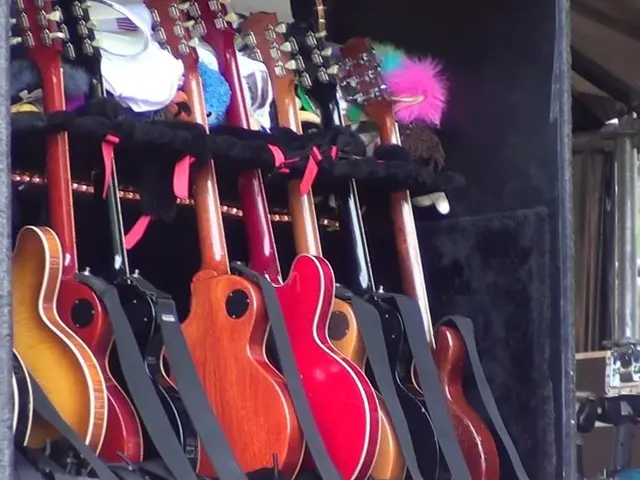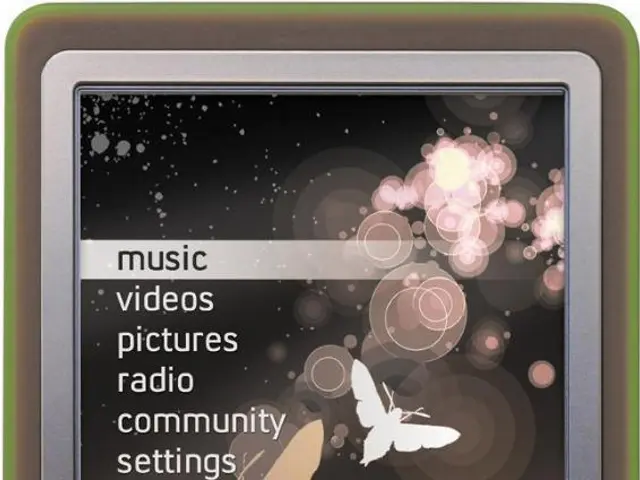An Automatic Record Changer Expressed: How Does a Turntable with an Integrated Changer Work?
Sure thing, let's dive into the captivating history and downfall of the automatic record changer!
These amazing machines were lauded as the future of record playback when they hit the music scene back in the late 1920s. They were the solution to the tedious task of manually switching records, offering a fully autonomous device that loaded records onto a player with no human input required.
But were the changers all they were cracked up to be?
Over time, some started to question the longevity of their loved vinyl records due to the apparent cons of using automatic record changers. Many claimed that these devices would result in cracked and warped records, a theory that led to a decrease in their production and ultimately made them a rarity by the turn of the century.
So, what was the problem? It all comes down to how the records were loaded and stored on the changer.
Automatic record changers employed an extended spindle to hold each record and a metallic rod to keep them in place. When the first record on the player had finished playing, the metallic rod holding the stack of records would move away, dropping the next record onto the player. The repeated dropping action placed stress on the records, potentially leading to damage.
Vinyl is a delicate material, and handling it incorrectly can cause extensive damage to the playing surface. Dropping a record onto a player each time you wanted to listen to it isn't exactly ideal for maintaining pristine records.
Additionally, leaving multiple records in the changer stacked and suspended above the player could lead to excessive scratching and warping due to the lack of a solid surface for the records to rest on and their constant contact with each other.
The use of automatic record changers gradually phased out throughout the '60s and '70s, eventually being seen as a less desirable, more complex way of playing records. By the end of the 1980s, records (and their players) were on the way out, with portable music solutions such as cassettes and CDs taking the limelight.
Despite their downfall, it's hard to argue that automatic record changers didn't create a significant impact. They eliminated the manual labor involved in playing records, making music a more relaxed experience.
Interestingly, some artists famous in the '60s, '70s, and '80s chose to take advantage of the convenience of automatic changers. For example, Stevie Wonder numbered the discs of many of his double-record albums in an order that suited automatic changers, allowing the records to be played in sequence without any fuss.
Nowadays, coming across a fully functioning automatic record changer is considered somewhat of a rarity. Some enthusiasts are eager to acquire one, as they offer a quirky touch to record players. Vintage record changers are gaining popularity on online auction sites, with some models fetching hundreds (or even thousands) of pounds.
If you're interested in learning more about automatic record changers and seeing one in action, check out the video below!
Did you know?The very first commercially successful automatic record changer, called the Victrola Orthophonic, was introduced by the 'Victor Talking Machine Company' in the US back in 1927.
Seems like we've scratched the surface (pun intended) of the rise and fall of the automatic record changer. What are your thoughts on these amazing, yet flawed, pieces of music technology? Share your experiences with us in the comments!
The rise of automatic record changers in the late 1920s revolutionized the music industry, offering a hands-free solution to the tedious task of record playback. However, over time, concerns arose about potential damage to vinyl records due to excessive dropping and scratching, leading to their diminished popularity by the turn of the century.
Intriguingly, some artists, like Stevie Wonder, employed the convenience of automatic record changers by numbering their double-record albums in a way that harmonized with these devices. Today, vintage automatic record changers are considered valuable collectibles among audiophiles, fetching high prices on online auction sites.








